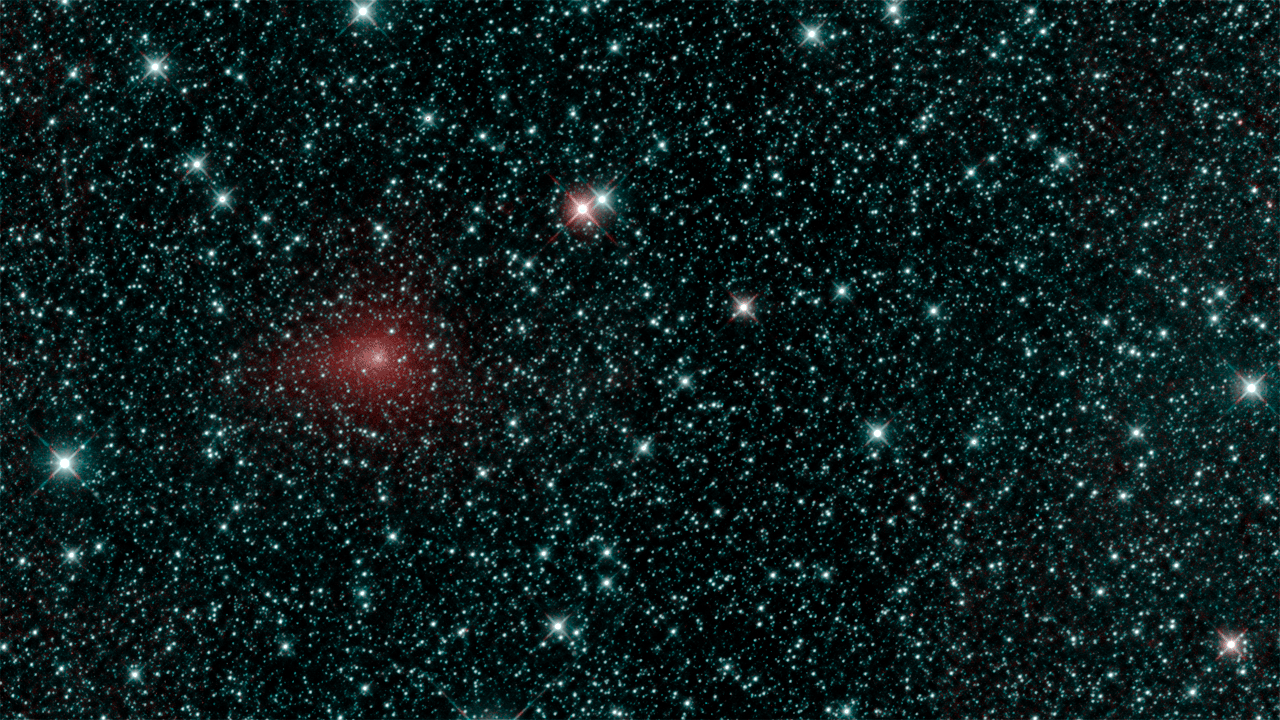17.04.2019

Comet C/2018 Y1 Iwamoto as imaged in multiple exposures of infrared light by the NEOWISE space telescope. The infrared images were taken on Feb. 25, 2019, when the comet was about 56 million miles, or 90 million kilometers, from Earth. C/2018 Y1 Iwamoto is a long-period comet originally from the Oort Cloud and coming in near the Sun for the first time in over 1,000 years. Credit: NASA/JPL-Caltech
NASA's Near-Earth Object Wide-field Infrared Survey Explorer (NEOWISE) mission released its fifth year of survey data on April 11, 2019. The five years of NEOWISE data have significantly advanced scientists' knowledge of asteroids and comets in the solar system, as well as the stars and galaxies beyond.
The data from all five years of the survey are available at:
http://wise2.ipac.caltech.edu/docs/release/neowise/.
"NEOWISE recently surpassed 95 billion recorded measurements of asteroids, comets, stars and galaxies - a remarkable accomplishment for a recycled spacecraft," said Lindley Johnson, NASA's planetary defense officer and head of the Planetary Defense Coordination Office at NASA Headquarters in Washington. "This asteroid hunter has measured the sizes of more than 1,000 near-Earth asteroids and is still producing great data, making it a unique asset in our portfolio of asteroid-hunting telescopes and an important prototype for an upcoming space-based NEO survey mission."
In addition to providing critical data on asteroids and comets in our own solar system, NEOWISE has provided data that have enabled the worldwide scientific community to track bursting stars, characterize distant quasars from the first billion years of the universe's history, conduct a census of millions of merging galaxies and take multi-wavelength measurements of hundreds of millions of stars and galaxies.
"The data from NEOWISE effectively give us a movie of the universe as it changes over time at infrared wavelengths, which is now being used in over 1,000 different astronomical publications," said Amy Mainzer, NEOWISE principal investigator at NASA's Jet Propulsion Laboratory in Pasadena, California.
From WISE to NEOWISE
Originally called the Wide-field Infrared Survey Explorer (WISE), the spacecraft was launched in December 2009 to study galaxies, stars and solar system bodies by imaging the the infrared light in the entire sky. It was placed in hibernation in 2011 after completing its primary astrophysics mission. In September 2013, the spacecraft was reactivated, renamed NEOWISE and assigned a new mission: to assist NASA's efforts to identify and characterize the population of near-Earth objects. NEOWISE is also characterizing more distant populations of asteroids and comets to provide information about their sizes and compositions.
The NEOWISE survey will end when its changing orbit eventually prevents it from obtaining high-quality data. But until that time, NEOWISE will continue to contribute valuable data both to humanity's record of the universe around us and to the search for asteroids that pose a hazard to Earth.
NASA's Jet Propulsion Laboratory in Pasadena, California, manages and operates the NEOWISE mission for NASA's Planetary Defense Coordination Office within the Science Mission Directorate in Washington. The Space Dynamics Laboratory in Logan, Utah, built the science instrument. Ball Aerospace & Technologies Corp. of Boulder, Colorado, built the spacecraft. Science data processing takes place at IPAC at Caltech in Pasadena. Caltech manages JPL for NASA.
Quelle: NASA
